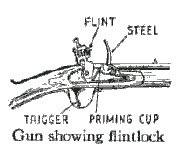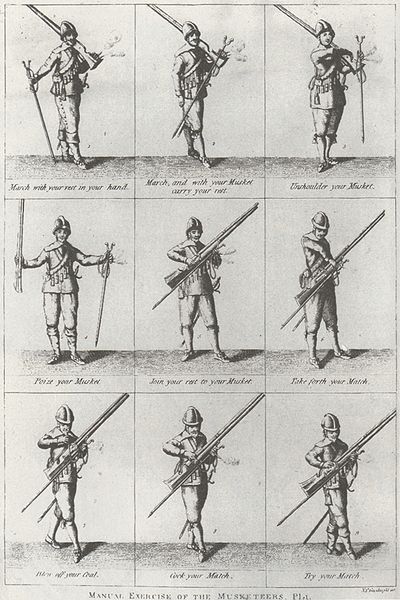The seventeenth-century English Civil War witnessed the evolution of personal and portable firearms. However, the simple pike still had its purposes, as edged weapons were wielded alongside mortars, cannons, and muskets. Below is a description of English Civil War weapons.
Primary English Civil War Weapons

English Civil War Weapons: The Mortar
This device is easy to manoeuvre and can be used by one man alone. An explosive shell is fired high into the air and explodes on impact. Although it was difficult to aim, this weapon was the most destructive of those used in the Civil War.

English Civil War Weapons: The Cannon
The cannons used in the Civil War were very heavy and difficult to move. The largest needed a team of 16 horses to move them. More commonly, smaller cannon were used but even these required at least 4 men to move them. For this reason they had to be put into position before a battle began. The missiles fired from the cannon were usually balls of iron, but sometimes stones were used. After the cannon had been fired the soldiers operating it had to go through a strict procedure of cleaning, loading the weapon and loading the gunpowder before it could be fired again. Aiming was difficult and the cannon were more effective as a means of instilling fear into the enemy than actually causing damage.

English Civil War Weapons: The Musket
There were two types of musket; the matchlock and the flintlock, which could be as long as five feet and had a firing range of up to 300 yards. They were both loaded in the same way; gunpowder was poured into the barrel and packed in hard with a stick. Then the lead ball would be put in followed by wadding to hold the ball in place.
To fire the matchlock, the most common type of musket, the soldier would empty gunpowder into a pan and cover it to protect it. He would then press a lighted piece of flax into a metal trigger called the serpent. When the gun was fired the lighted flax in the serpent would come down into the pan and light the gunpowder. The flame from this would then enter the barrel of the gun and ignite the gunpowder that had been poured into it and the lead ball would be fired.

To fire the flintlock was slightly easier but more expensive. The pan would be filled in the same way but the serpent contained a piece of flint which, when it struck the pan, would produce a spark which would ignite the gunpowder.
Both weapons were dangerous and clumsy to use. Some of the longer muskets needed a rest to balance the barrel on because they were too heavy to hold. They were impossible to reload quickly and were most effective when a group of musketeers fired a volley of shots at the enemy.

English Civil War Weapons: The Pike
The Pike was one of the most commonly used weapons on the Civil War battlefield. The pike was a long wooden shaft with a steel point on the end. They were cheap to make, soldiers required very little training to use them and they could be very effective especially when used in a group. Pikes were supposed to be sixteen feet in length but often soldiers sawed a few feet off the ends to make them easier to carry.
The Pikemen often formed the front line of an army. Operating together they had to lower their pikes to prevent a cavalry charge from breaking the ranks. The cavalrymen’s horses would be injured by the pike and would fall to the ground unseating his rider who would then be an easy target for the musketmen or for the sword. If the army was surrounded then the pikemen would form a circle and lower or raise their pikes to provide a ‘hedgehog’ of cover.
This post is part of our larger historical resource on the English Civil War. For a comprehensive overview of the English Civil War, click here.
Cite This Article
"English Civil War Weapons" History on the Net© 2000-2024, Salem Media.
April 20, 2024 <https://www.historyonthenet.com/english-civil-war-weapons>
More Citation Information.






